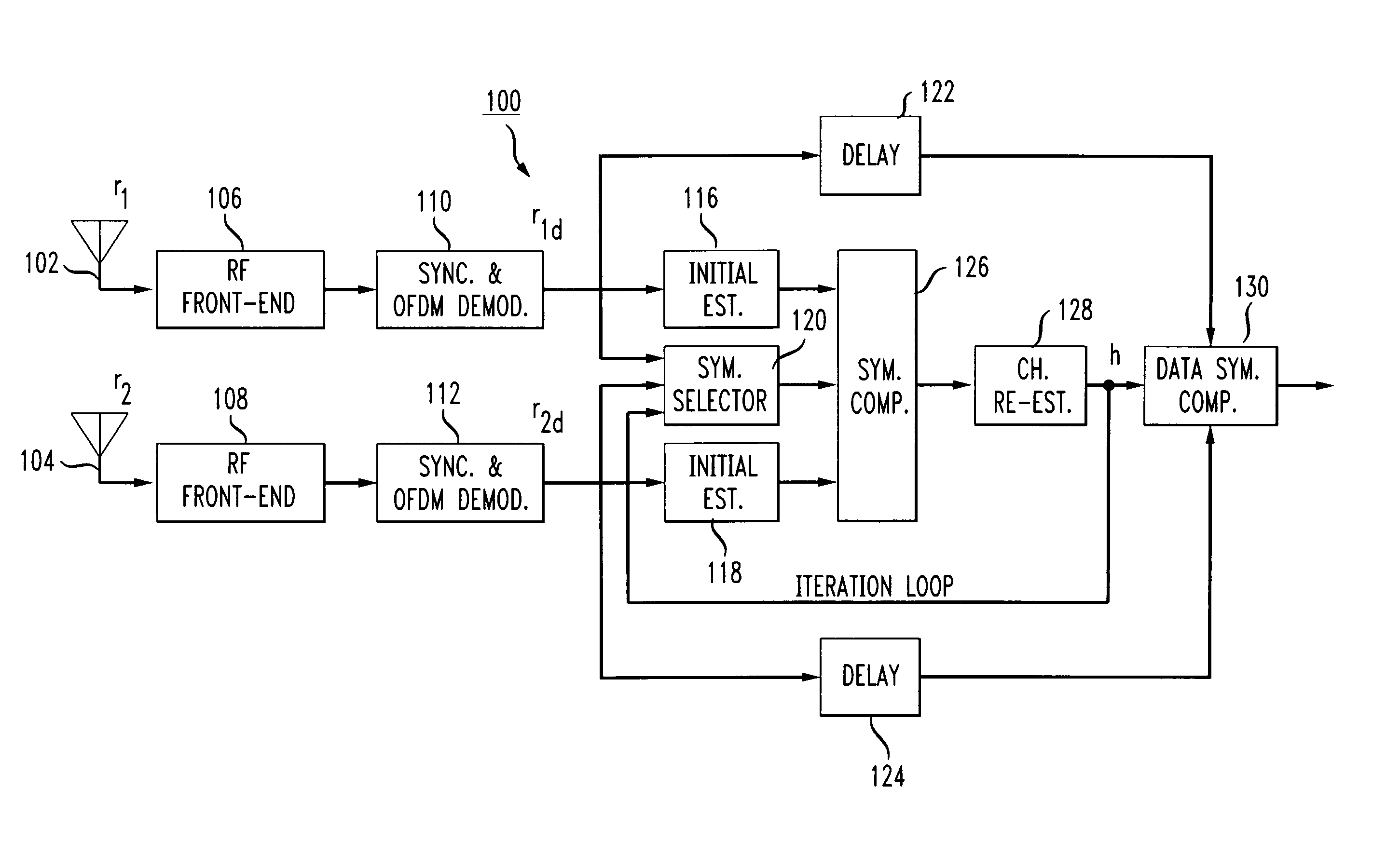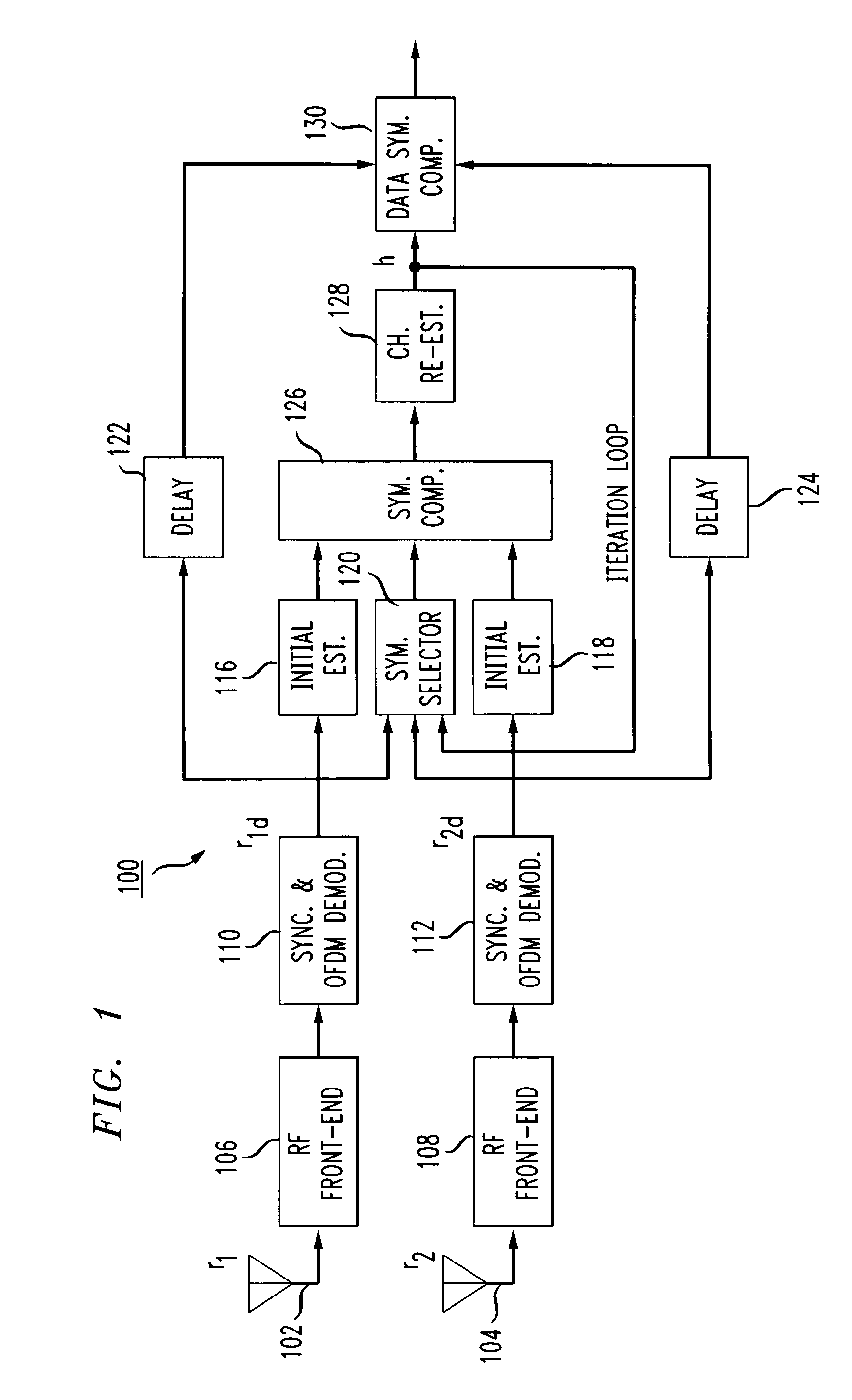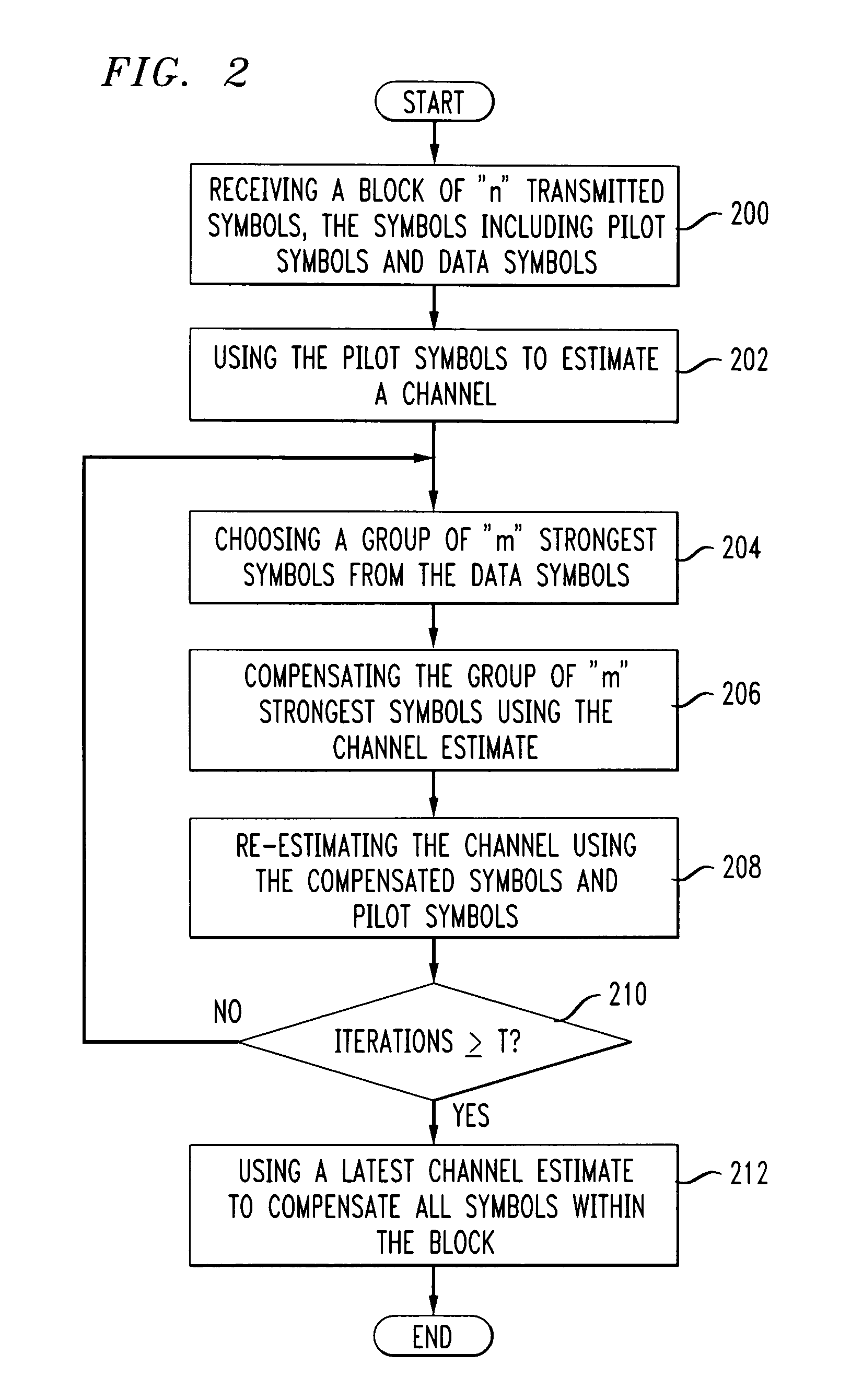Turbo channel estimation for OFDM systems
a technology of channel estimation and ofdm, applied in the field of wireless communication systems, can solve the problems of increasing the complexity of the system, inhibiting faster transmission, and affecting so as to increase the efficiency of channel estimation
- Summary
- Abstract
- Description
- Claims
- Application Information
AI Technical Summary
Benefits of technology
Problems solved by technology
Method used
Image
Examples
first embodiment
[0031]The present invention may be understood with reference to the drawings. FIG. 1 illustrates the invention. A communication system receiver 100 comprises an analog front-end having two antenna receivers 102 and 104 for receiving data r1 and r2 respectively. The respective RF front ends 106 and 108 receive the signal where they are synchronized and demodulated from the OFDM signals as shown in blocks 110 and 112. As is known, the received signals r1 and r2 will experience different fading characteristics and their average strengths for r1d and r2d (the received signals r1 and r2 after they are OFDM demodulated) are different.
[0032]The demodulated data from block 110 is transmitted to an initial channel estimator 116 and a symbol selector 120. Similarly, the demodulated data from block 112 is transmitted to an initial channel estimator 118 and a symbol selector 120. The r1d demodulated data is delayed 122 and the r2d demodulated data is delayed 124. The symbol selector 120 perform...
second embodiment
[0037]FIG. 2 illustrates the invention related to a method of estimating a channel in a wireless receiver. The steps outlined in FIG. 2 are for illustration only and are not meant to be limited to the exact order or procedure but set forth the general concept of the invention. First, the receiver receives a block of “n” transmitted symbols (200). The symbols preferably include pilot symbols and may include “d” data symbols. Using the pilot symbols, a wireless channel is estimated (202). If this is the first pass through the estimation and compensation process, then the channel estimate at this stage may be referred to as an “initial” estimate. A set or group of “m” strongest symbols is chosen from the received “d” data symbols (204). Next, the “m” strongest symbols are compensated (206) using the channel estimate from step 202. The strongest symbols are determined by signal strength or by using a predetermined signal-to-noise ratio.
[0038]When multiple receive antennas are used as sh...
PUM
 Login to View More
Login to View More Abstract
Description
Claims
Application Information
 Login to View More
Login to View More - R&D
- Intellectual Property
- Life Sciences
- Materials
- Tech Scout
- Unparalleled Data Quality
- Higher Quality Content
- 60% Fewer Hallucinations
Browse by: Latest US Patents, China's latest patents, Technical Efficacy Thesaurus, Application Domain, Technology Topic, Popular Technical Reports.
© 2025 PatSnap. All rights reserved.Legal|Privacy policy|Modern Slavery Act Transparency Statement|Sitemap|About US| Contact US: help@patsnap.com



